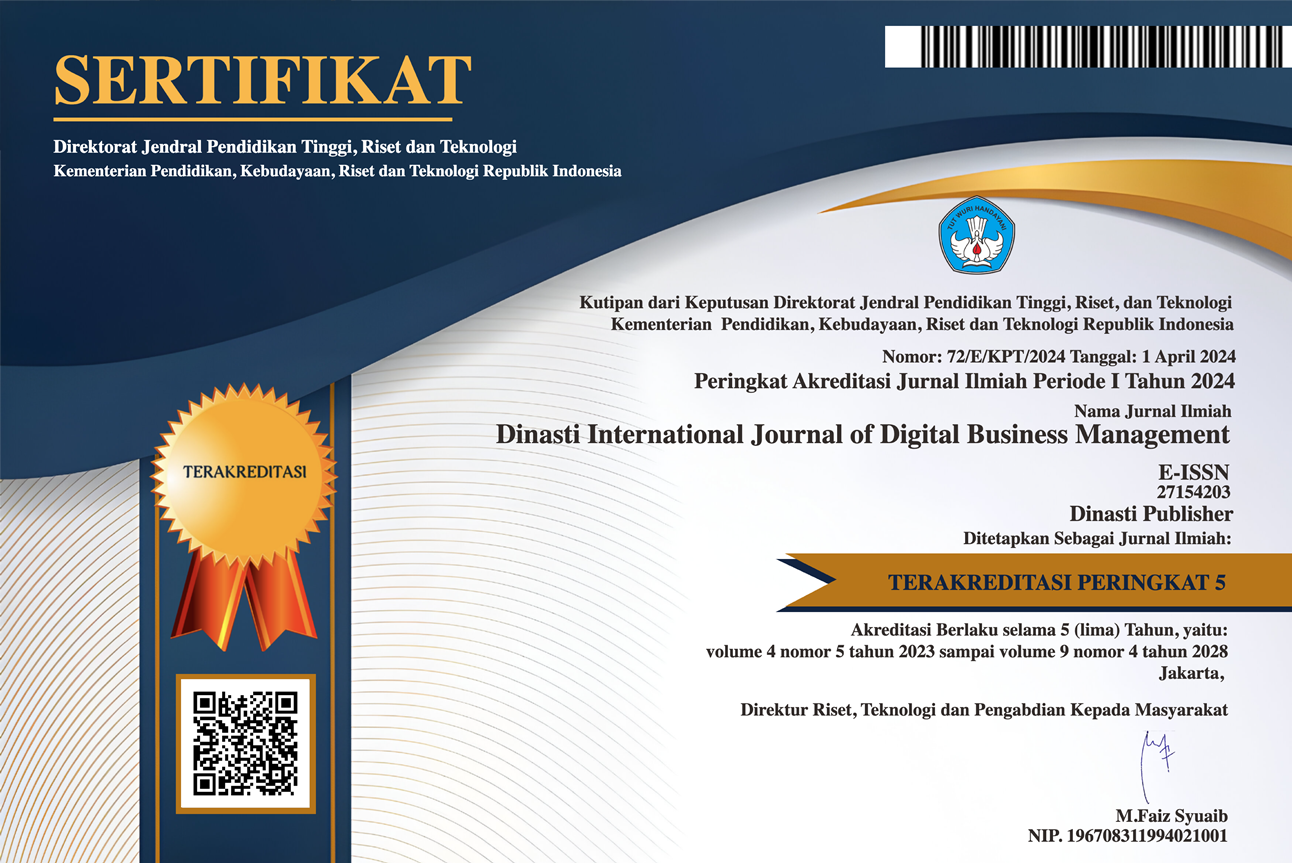Satria Mandala Museum as a Historical Heritage of the Nation's Struggle to Increase the Sense of Nationalism of the Younger Generation
DOI:
https://doi.org/10.38035/dijdbm.v6i3.4577Keywords:
Satria Mandala Museum, concept, new museum, management effortsAbstract
The concept of museums according to new museology is to be relevant and useful for education and involve community participation. The problem of this research is how museum management efforts are based on the new museum concept. The purpose of this research is that the Satria Mandala Museum can be in line with the novelty or in accordance with the current conditions to serve and meet the needs of the community according to the new museum concept, hopefully. The research method used in this research is qualitative by using the concept of a new museum and applying the concept of mutation theme. Data collection is done by using primary data and secondary data. From the results of the research, it can be seen that the Satria Mandala Museum currently needs to make management efforts based on the New Museum concept, which is oriented towards education and the role of the community.
References
Akbar, A. (2010) Museums in Indonesia: obstacles and hopes . Papas Sinar Sinanti. Halpin, MM (2007) '“Play it Again, Sam”: Reflections on a New
Haryono, D. (2010) Museum Ullen Sentalu, Implementation Museology New . Thesis. University Indonesia
Hooper, E. and Greenhill (eds) (2007) Museums and Education . 1st ed. London & New York: Routledge Taylor & Francis.
Istina, D. (2022) 'The Existence and Function of Museums for Generation Z', Journal of Art Governance , 8, pp. 95–104.
MacDonald, G.F. and Alsford, S. (2007) ‘Canadian Museums and the Representation of Culture in a Multicultural Nation’, in S. Watson (ed.) Museums and their Communities. 1st edn. London and New York: Routledge Taylor and Francis Group, pp. 276–291.
Magetsari, Nurhadi. 2008. ‘Filsafat Museologi’. dalam ‘Pemaknaan Museum untuk Masa Kini’. 2009. Museografia, 2(2).
McCoy, M. (2016) Relics of Battle: War, Memory, and New Museum Theory in Relics of Battle: War, Memory, and New Museum Theory in Military Museums Military Museums. Museum Studies. University of Denver. Available at: https://digitalcommons.du.edu/etd.
Mensch, P. van (1996) ‘Museology and management: enemies or friends? Current tendencies in theoretical museology and museum management in Europe 1’, in Museums for the new millennium. Washington, pp. 1–16.
Museology’, in S. Watson (ed.) Museums and their Communities. 1st edn. London and New York: Routledge Taylor & Francis, pp. 47–52.
Noor, A. (2013) Event Management . 3rd edn. Edited by A. Noor. Bandung: Alphabeta. Notoradjo, S. (2011) Event Organizing The Basics Event Management . Jakarta: PT. Gramedia Library Main.
Pieken, G. and Rogg, M. (2012) 'The Bundeswehr Museum of Military History: Exhibition Guide', Sandstein Kommunikation , pp. 1–192.
Pols, F.T. Van Der (2013) The Future of Military Museums
Reader, A.R. (2003) Museums And Source Communities. 1st edn, Museums And Source Communities. 1st edn. Edited by L. Peers and A.K. Brown. London and New York: Taylor & Francis e-Library.
Ross, M. (2004) ‘Interpreting the New Museology’, Museum and Society, 2(2), pp. 84– 103.
Vergo, Peter. The New Museology. Reaktion Books. 1989.
Washburn, D.K. (2008) The New Museology, Museum Anthropology. Edited by P. Vergo. Wiley. Available at: https://doi.org/10.1525/mua.1992.16.2.58.
Downloads
Published
Issue
Section
License
Copyright (c) 2025 Yudha Kusumah

This work is licensed under a Creative Commons Attribution 4.0 International License.
Authors who publish their manuscripts in this journal agree to the following conditions:
- The copyright on each article belongs to the author(s).
- The author acknowledges that the Dinasti International Journal of Digital Business Management (DIJDBM) has the right to be the first to publish with a Creative Commons Attribution 4.0 International license (Attribution 4.0 International (CC BY 4.0).
- Authors can submit articles separately, arrange for the non-exclusive distribution of manuscripts that have been published in this journal into other versions (e.g., sent to the author's institutional repository, publication into books, etc.), by acknowledging that the manuscript has been published for the first time in the Dinasti International Journal of Digital Business Management (DIJDBM).















































